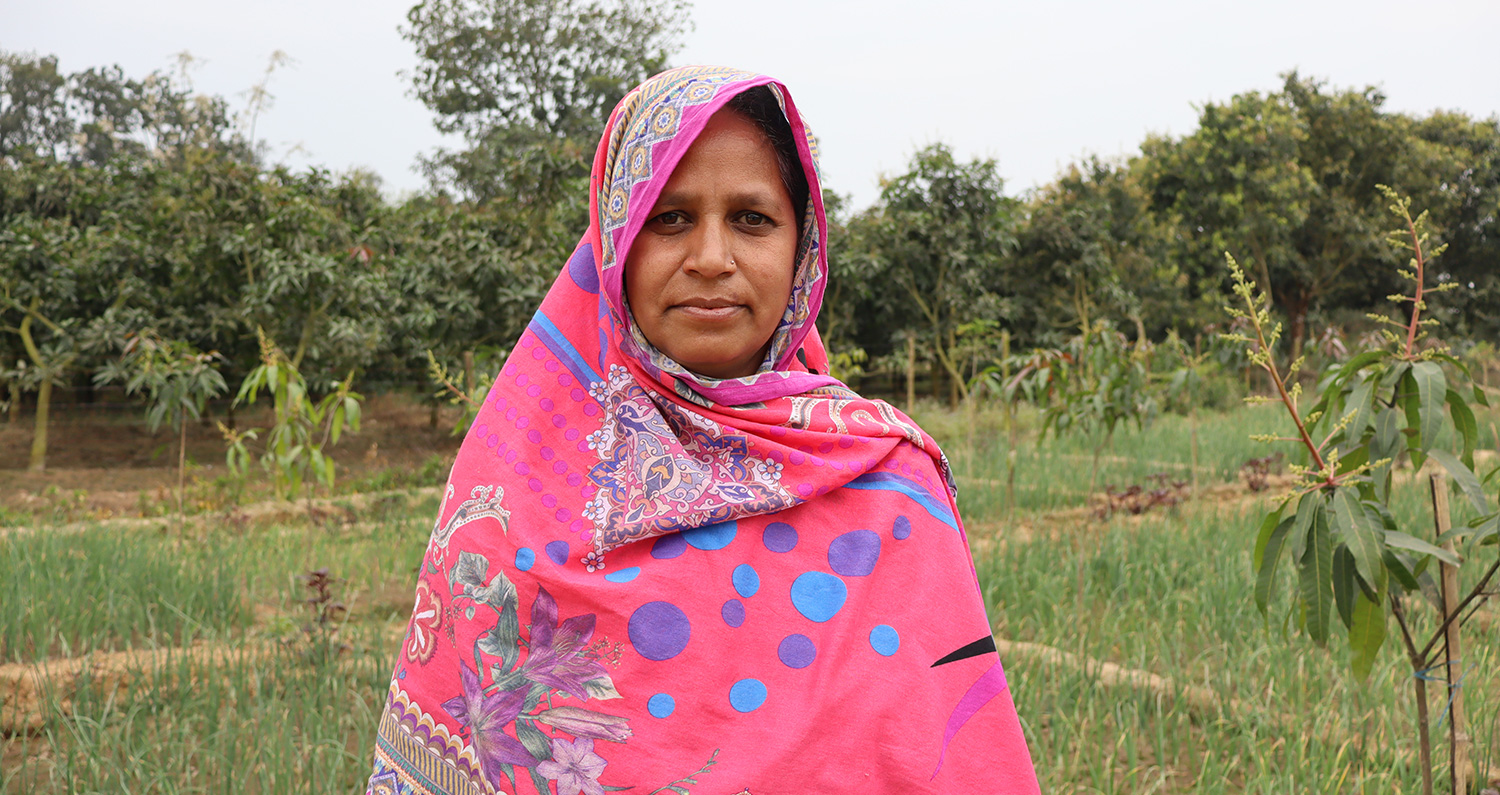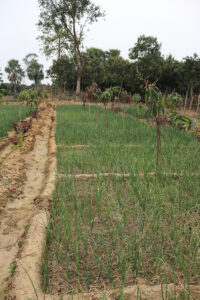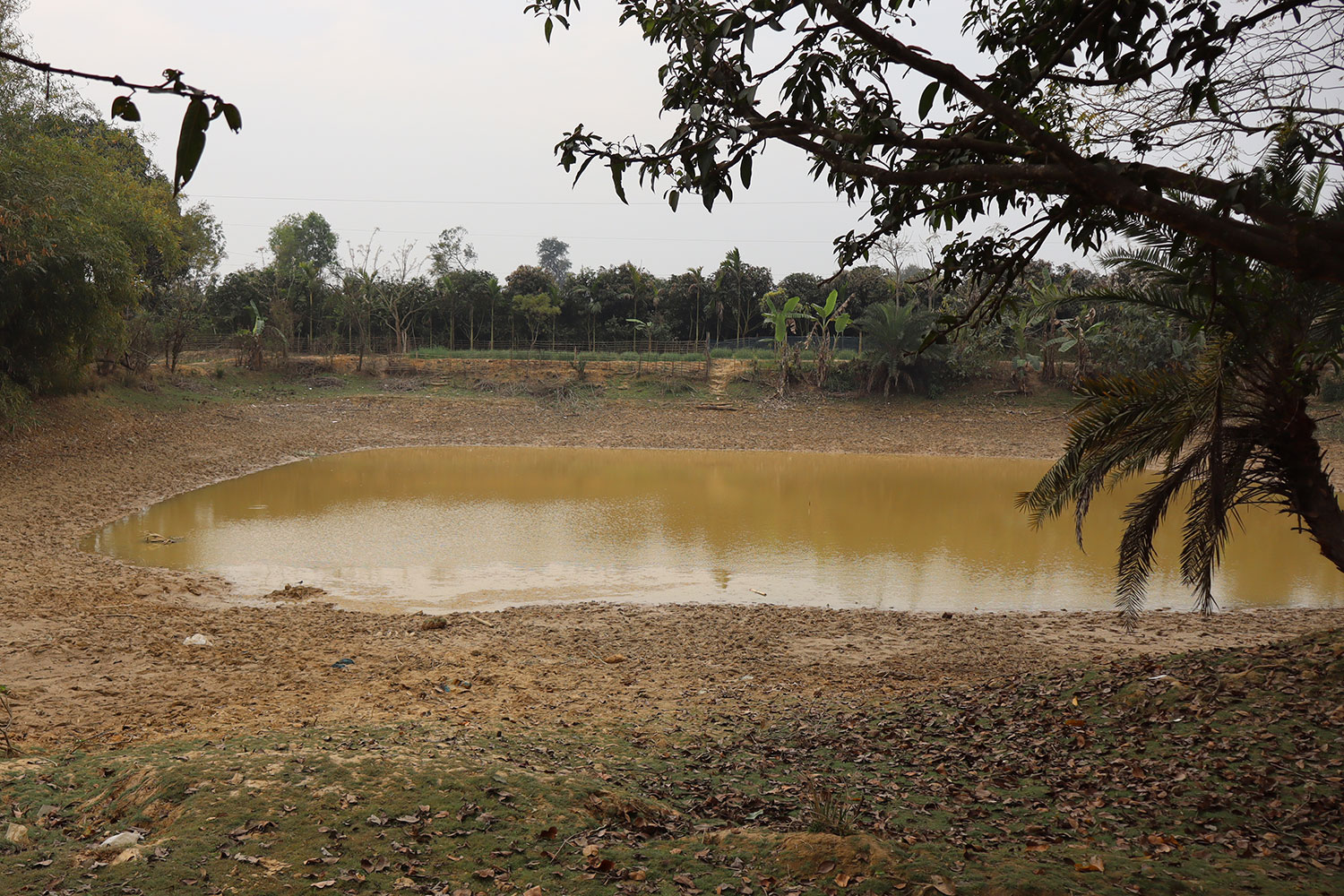Marjina’s forest: Adapting a farm for biodiversity, climate change and profit
Variety is the spice of life. It’s also a more profitable and biodiverse approach to farming. Across Bangladesh, there’s a transformation happening one garden, acre, and farm at a time.

BY MICA BEVINGTON
Variety is the spice of life. It’s also a more profitable and biodiverse approach to farming. Across Bangladesh, there’s a transformation happening one garden, acre, and farm at a time.
One year ago, mango trees dominated the acre of land farmed in northern Bangladesh by Marjina and her husband, Salaam. Neat rows of mature mango trees spread back from the family’s deep, man-made pond. While mango trees produce a delicious fruit that is popular, it is limited to one harvest each year. After about ten years, the trees produce more sporadically, sometimes just once every two years.
Marjina met BRAC agriculture experts in May 2023, looking for a solution. The team considered her single-crop farm, and suggested more diverse crops, along with a program to improve the soil in which the family planted. BRAC also trained Marjina on the kinds of trees she might consider planting in place of mango, as well as vegetables.
 Almost a year on, the result is beautiful. A mix of fruit-bearing, and hardwood, medicinal trees, alongside plants hearty enough to grow under the shade of the trees’ future canopies are thriving.
Almost a year on, the result is beautiful. A mix of fruit-bearing, and hardwood, medicinal trees, alongside plants hearty enough to grow under the shade of the trees’ future canopies are thriving.
Marjina says she hasn’t looked back. “I’m very happy,” she says. She shows off rows of trees, which still include some mango trees, as well as bottle gourds, cauliflower, onion and – her personal favorite, for its speed to harvest – potato.
BRAC agriculture experts took an interest in her soil, which was too acidic after years of planting mango trees, and reduced rainfall. Together, they found ways she could improve it with organic compost. Even with the family’s attention to the soil composition, which is helping them grow more vegetables, and healthier trees, an acidity kit measures a 6.29 reading – not perfect, but far better than earlier readings.

The family consumes some of the harvest, but sells at least half an acre’s worth. “I’m confidently profitable,” Marjina says with pride.
To lessen the physical burdens associated with carting water from the family’s pond up to each plant, BRAC helped the family purchase a $220 motorized pump to pull water to the rows. BRAC paid 70% of the cost, with the family investing the remainder. While immensely helpful for farming, the family has also begun renting the pump out to other farmers. For one hour’s rental, Marjina earns about $2.
While thrilled with the transformation, the family keeps a close eye on the skies. Along the walk to her forest, as she calls it, she passes another pond that was at least 15 feet below level. Her own pond would be dry by the end of April.

“There’s a fallow period,” she explains. And that dry period is getting longer as climate change shortens the monsoon season. “Sometimes, it lasts up to four months. Then we are working with any rain that comes to cultivate.”
Marjina isn’t weathering her new crops alone. She can access the local BRAC Adaptation Clinic, where experts show her, and farmers like her, how to select, plant, care for, and harvest a variety of trees, plants and vegetables. When a plant shows any signs of disease, or wilting, the adaptation clinic staff can prescribe solutions to help the farmers avoid losing crops and income.
Across the developing world, climate-adaptive techniques applied to agriculture are an urgent priority both for providing work as well as global food security. In Bangladesh, Adaptation Clinics and the BRAC Seed and Agro social enterprise provide farmers with knowledge, tools, seeds and fertilizers, and links to broader markets, as needed. Significant knowledge and skills transfer still needs to take place so that land and water use in agriculture is optimized for farmers all over the country, just as Marjina and her family are doing each day on their farm.
Mica Bevington is Director of Communications and Digital Fundraising at BRAC USA.